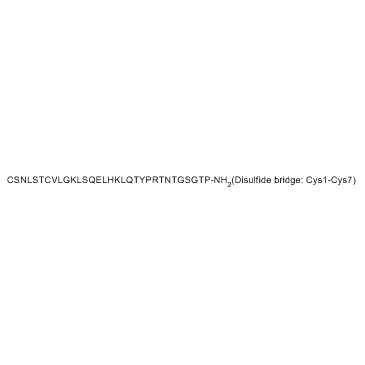Noncovalent PEGylation: different effects of dansyl-, L-tryptophan-, phenylbutylamino-, benzyl- and cholesteryl-PEGs on the aggregation of salmon calcitonin and lysozyme.
Claudia Mueller, Martinus A H Capelle, Emek Seyrek, Sophie Martel, Pierre-Alain Carrupt, Tudor Arvinte, Gerrit Borchard
Index: J. Pharm. Sci. 101(6) , 1995-2008, (2012)
Full Text: HTML
Abstract
Protein aggregation is a major instability that can occur during all stages of protein drug production and development. Protein aggregates may compromise the safety and efficacy of the final protein formulation. In this paper, various new excipients [phenylbutylamino-, benzyl-, and cholesteryl-polyethylene glycols (PEGs)] and their use for the reduction of aggregation of salmon calcitonin (sCT) and hen egg-white lysozyme (HEWL) by noncovalent PEGylation are presented. The ability to suppress aggregation of sCT in various buffer systems at a 1:1 molar ratio was assessed by following changes in protein conformation and aggregation state over time. The results are compared with that of dansyl- and L-tryptophan (Trp)-PEGs described in earlier publications. Furthermore, the influence of the different PEG-based excipients on the aggregation of HEWL was measured. HEWL aggregation was completely suppressed in the presence of cholesteryl-PEGs (2 and 5 kDa), whereas deterioration was observed using benzyl-methoxy polyethylene glycols (mPEGs; 2 and 5 kDa). Phenylbutylamino- and Trp-mPEG (2 kDa), as well as dansyl-PEGs of different molecular weight prolonged the lag phase of aggregation and reduced the aggregation velocity of HEWL.Copyright © 2012 Wiley Periodicals, Inc.
Related Compounds
| Structure | Name/CAS No. | Molecular Formula | Articles |
|---|---|---|---|
 |
Salmon Calcitonin Acetate
CAS:47931-85-1 |
C145H240N44O48S2 |
|
The use of polyion complex micelles to enhance the oral deli...
2012-12-01 [Biomaterials 33(34) , 8881-92, (2012)] |
|
[Osteoporotic fractures: not only in females].
2014-04-02 [Rev. Med. Suisse 10(424) , 767-8, (2014)] |
|
Decline in calcitonin receptor expression in osteocytes with...
2014-05-01 [J. Endocrinol. 221(2) , 181-91, (2014)] |
|
Prevention and treatment of postmenopausal osteoporosis
2014-07-01 [J. Steroid Biochem. Mol. Biol. 142 , 155-70, (2014)] |
|
Design and evaluation of inhalable chitosan-modified poly (D...
2012-08-30 [Eur. J. Pharm. Sci. 47(1) , 235-43, (2012)] |